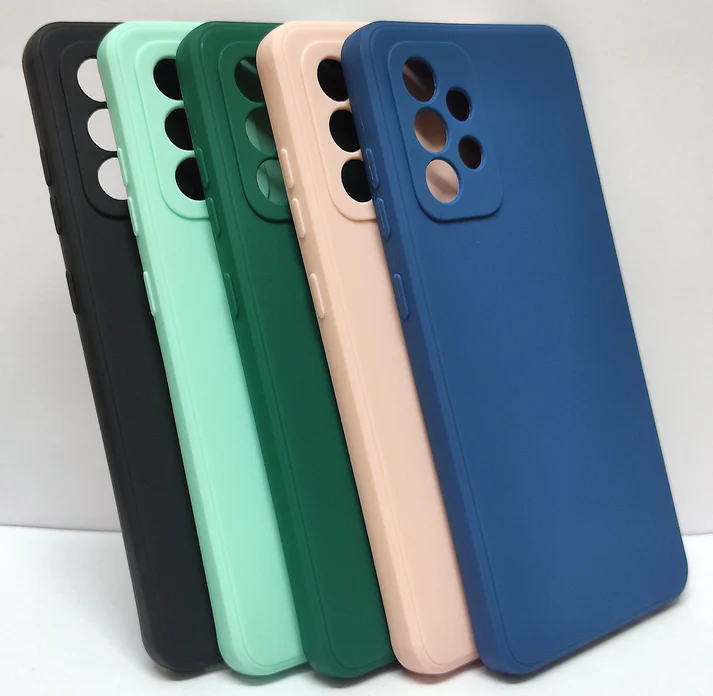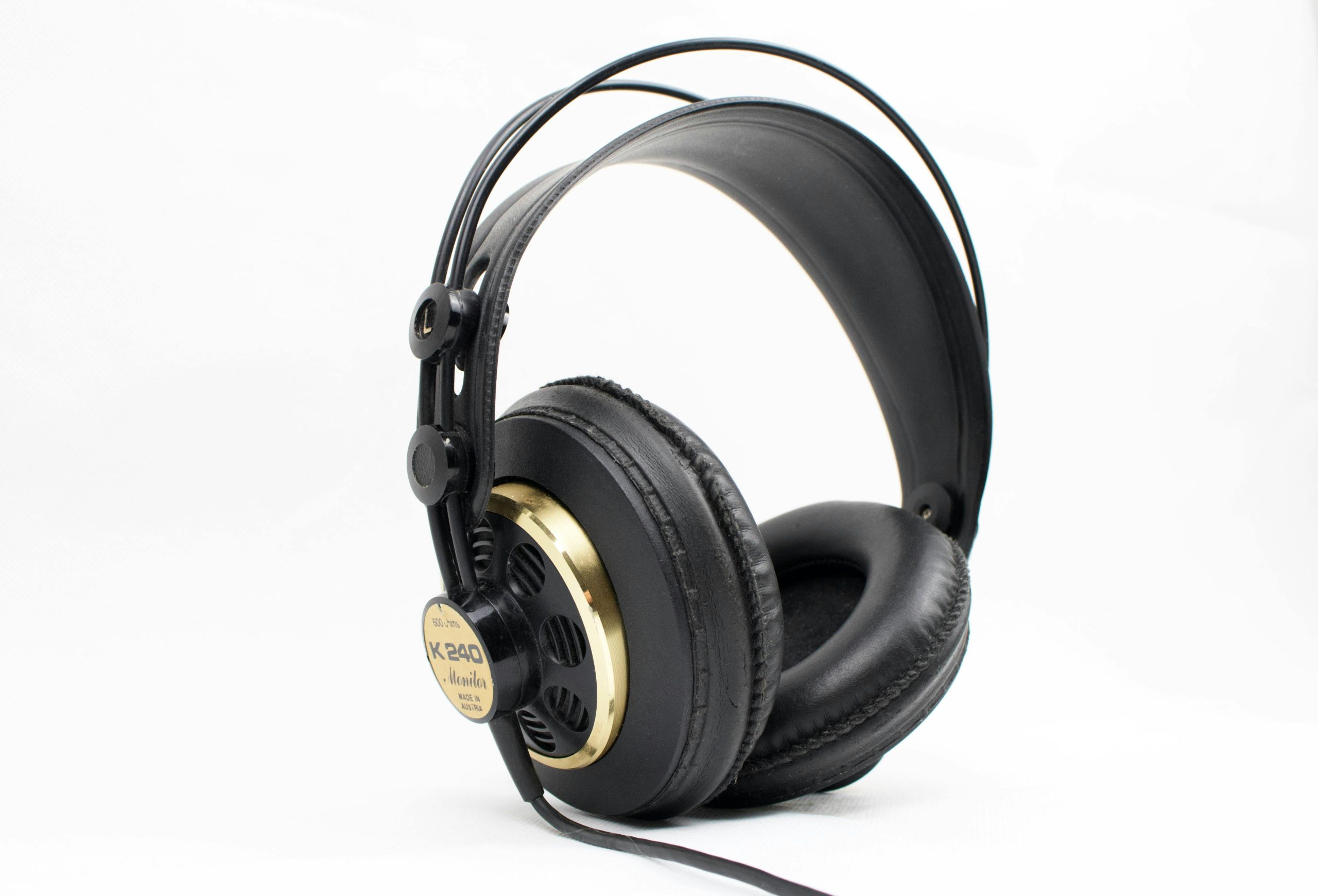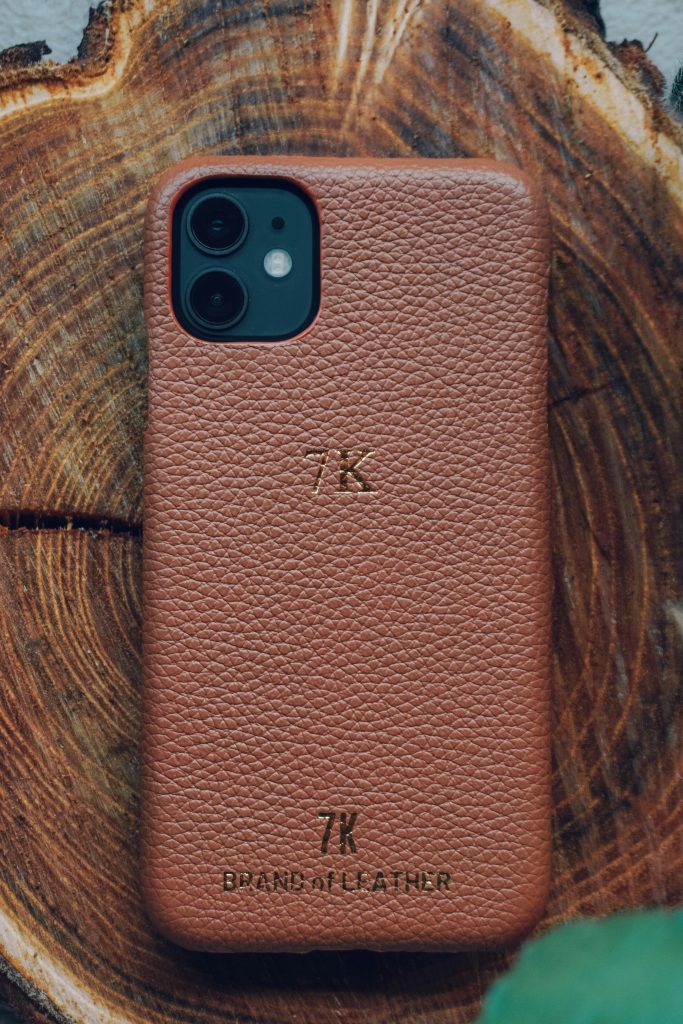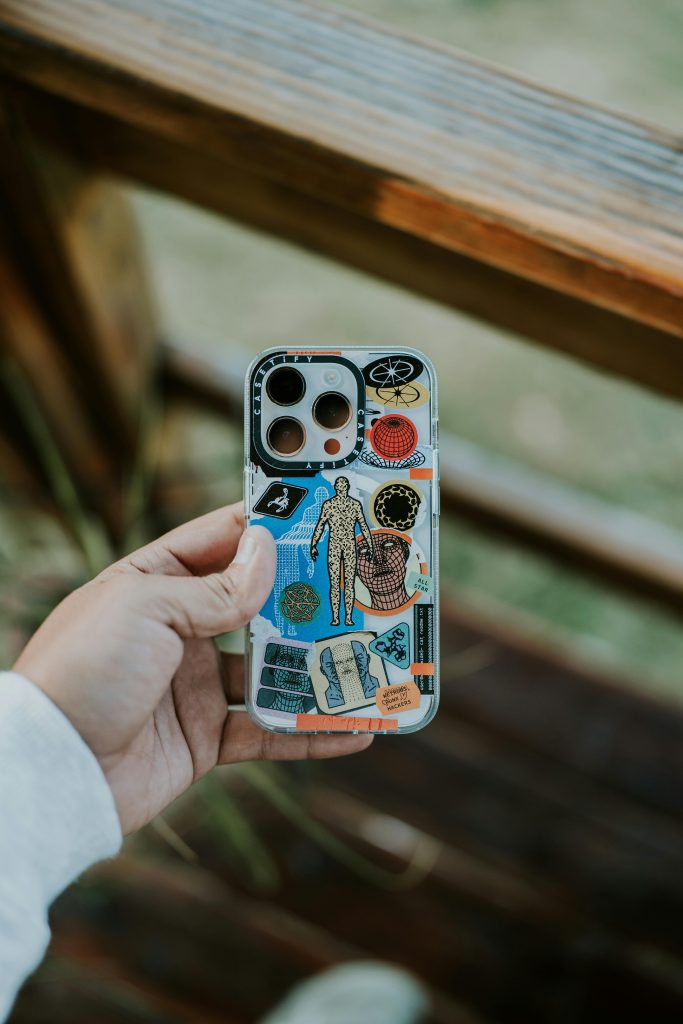Unbelievable Deals: Top 50 Mobile Cases Under ₹200!
In today’s world, your phone is more than just a tool—it’s an investment. A good mobile case saves you from cracked screens, scratched backs, and costly repair bills. Whether you care most about protection, style, or extra functionality, this guide will help you choose a mobile case that meets your needs. Read on to find out what materials work best, what features really matter, and how to decide what’s right for you.

The Ultimate Guide to Mobile Cases: Choose, Style & Protect
Why a Good Mobile Case Matters
- Protection from everyday accidents: Drops, bumps, scratches—smartphones are delicate. A robust case reduces the risk of damage, especially to the screen, camera, and corners.
- Preserving resale value: A phone that looks good and is physically intact sells for more. Keeping it protected helps maintain value.
- Aesthetic & personal style: Cases let you express your personality—colors, textures, designs, etc
- Added functionality: Wallet slots, kickstands, wireless charging compatibility, and more can make a case do more than just protect.
What to Look for: Key Features Before You Buy
| Feature | Why It’s Important |
|---|---|
| Exact fit for your model https://zapvi.in/mobile-cover/ | Misaligned cutouts or weak button protection can defeat the purpose of the case. Also, compatibility with wireless charging or Mag Safe may be affected. |
| Raised edges / lips | Helps protect screen and camera lenses when the phone lies flat or falls. |
| Multi‑layer or hybrid structure | Combining hard shell + soft edges, or rigid back + shock absorbing sides often gives better drop protection. |
| Quality material | Determines durability, grip, aesthetics, weight, comfort. Some materials perform much better than others. |
| Extra features | Such as card slots, kickstand, waterproofing, wallet function—all useful but may add bulk or weight. |
Materials & Their Pros and Cons
Different materials offer different trade‑offs. Here are common ones used in mobile cases, how they perform, and what to expect:
- Silicone
- Pros: Soft, flexible, affordable; good grip; decent shock absorption.
- Cons: Can attract dust/ lint; may age or stretch; less protective against harsh impacts
- TPU (Thermoplastic Polyurethane)
- Offers a balance between soft (silicone) and hard materials. More rigid than silicone, better scratch and impact protection.
- Polycarbonate (PC) / Hard Plastic
- Pros: Rigid; good protection against impact and scratches; can be slim.
- Cons: Less flexible; can be brittle; may crack under heavy impact.
- Leather / PU Leather
- Pros: Premium look; elegant; often used in wallet/folio style. Genuine leather can develop character over time.
- Cons: Less drop protection; can stain or wear; often more expensive.
- Wood
- Pros: Unique aesthetic; eco‑friendly if sustainably sourced; warm natura
- Cons: Can crack/warp; usually less protection against high drops; more expensive.
- Metal / Aluminum / Carbon Fiber Composites
- Pros: Very good protection; premium look; strong and durable. Carbon fiber is lightweight relative to its strength.
- Cons: Heavier; may interfere with wireless signals or wireless charging if not designed properly; cost tends to be high.
- Special / Novel Materials
- Eco‑plastics, recycled materials, biodegradable options, etc., are becoming more popular. If these appeal to you, check how they age and how durable they are broadly.

Unbelievable Deals: Top 50 Mobile Cases Under ₹200!
Leather mobile cases offer an elegant blend of style and protection. Crafted from real or high‑quality faux leather, they provide a tactile, luxurious feel and develop character over time through natural wear. With soft inner lining and reinforced edges, they help guard your phone against scratches, minor drops, and daily wear and tear. Plus, their sleek design makes them perfect for both professional settings and casual use, giving your phone a polished look without sacrificing practicality.

Types & Styles of Mobile Cases
Depending on your lifestyle and priorities, some styles might suit you better than others. Here are common styles / types and what they offer:
- Slim / Hard Shell Cases: Lightweight, minimal bulk, more style options. Good if you want something sleek.
- Rugged / Heavy‑Duty / Drop‑Tested mobile Cases: Designed for maximum protection. Bulkier, often using dual‑layers, reinforced corners. Great if you are often outdoors, travel, or risk drops.
- Wallet / Folio / Flip mobile Cases: Includes card slots, sometimes covers for screen. Offers full protection but adds bulk; style is classic.
- Clear / Transparent / Transparent Hybrid mobile Cases: Let the phone’s original design shine. Many use clear PC or TPU; may yellow over time.
- Designer / Fashion / Custom Mobile Cases: Emphasis on aesthetics: colors, prints, personalization. Sometimes less protection, so check build quality.
- Special FunctionMobile Cases: Kickstands, belt clips, magnetic mounts, battery‑case etc. Useful features but may compromise slim design or protection.
How to Choose: Matching Mobile Case to Your Needs
Here are steps and criteria to help you pick the right case:
- Assess Risk & Usage
Are you outdoors often, prone to drops, in rugged environments, or always careful? The more risky your usage, the more protection you’ll need. - Balance Protection vs Bulk
High‑protection (rugged) cases tend to add size, weight. If portability and slimness matter more, you might prefer hard shell or hybrid with slim profile. - Compatibility Considerations
- Wireless charging / MagSafe / other magnetic features: make sure Mobile case supports it.
- Camera lens protection: cutouts, raised edges, etc.
https://www.youtube.com/ - Port access, buttons: quality of design matters.
- Material Preference
Choose based on aesthetic, grip, durability, and maintenance. For example, leather looks nice but needs more care; silicone gives good grip but may attract dust. - Check Reviews & Drop Test Certifications
If possible, see real user reviews, check if the case has drop‑test ratings (military standard, etc.). These help verify whether a case really protects. - Price vs Value
Don’t just go for cheapest. A low priced case that fails early costs more. But also expensive doesn’t always mean best. Inspect build, materials, design.
Caring for Your Case & When to Replace It
- Clean regularly: Wipe off dust, debris. Materials like silicone or leather can be cleaned with appropriate cleaner.
- Inspect for wear: Cracks, loosening, discolouration—these reduce protection.
- Replace when needed: A damaged case can give a false sense of protection. If corners are compromised, or it no longer fits snugly, it’s time for a new one.
Emerging Trends & Market Insights
To stay ahead, it helps to know what directions the mobile cases market is going in. These trends can help you align your product offering, content, and marketing.
- Material Innovation & Sustainability Mobile Cases
- Silicone still leads the market: in 2024, silicone‑based cases had a large share (~56.64%) due to their balance of cost, protectiveness, ease of moulding.
- However, eco‑friendly materials are growing fast: biodegradable TPU, recycled plastics, plant‑based polymers, even algae resins. Consumers (especially younger ones) care more about sustainability.
- Leather (genuine or PU) is also expected to expand, especially in the premium segment. Demand for premium materials and finishes is a drive
- Design Trends & Personalization
- Minimalist aesthetics are strong: neutral tones, matte finishes, textures that resist fingerprints. Many buyers want cases that complement the phone rather than overpower it.
- Bold designs, custom prints, pop culture themes, seasonal designs are also popular. Personalization (names, photos) is a differentiator.
- Swappable panels or modular design components (for style flexibility) are becoming more common. This lets the user change look without buying a whole newMobile cases.
- Functionality, Tech & Harmonization
- Wireless charging / Mag Safe compatibility is now expected for many premium Mobile cases. Mobile cases that interfere with charging or magnetic accessories lose points with consumers.
- Shock absorption and drop protection are still major decision factors. People want assurance of protection from falls, often with data or certifications (MIL‑STD etc.). Rugged and hybrid (hard + soft materials) designs are in demand
- Antimicrobial coatings are another feature being added, especially for high‑touch surfaces. As people get more aware of hygiene, this becomes a selling point.
- Market Size, Growth & Regional Differences
- The global mobile cases & covers market: ~USD 11.5‑12.0 billion in 2024, projected to grow steadily (CAGR ~3.3%) towards 2034.
- Asia‑Pacific leads in revenue share (~43.7%) in 2024. Also premium offerings are increasing, not just budget ones.
- Back‑plate / shell Mobile cases (i.e. single back piece cases) still dominate share, but folio / wallet / flip cases are growing faster in CAGR
More Content You Can Add To Your Article
Here are additional sections you can integrate to make the content more in‑depth and more likely to satisfy Rank Math & user intent.
Advanced Protection: Certifications & Drop Tests
- Explain what MIL‑STD‑810G (or similar military standards) means, how the case is tested (height, repeated drops)
- Mention IP ratings if relevant (for water or dust resistance)
- Explain that not all “rugged” cases are equal; the build quality, edge protection, corner bumpers matter a lot
Tech‑Driven Features & Accessories
- Wireless Charging / Mag Safe: Explain how magnets work (if included), how the case must not be too thick or have interfering metals.
- RFID‑blocking wallet Mobile cases Popular especially for people who carry cards; how they block scanning, what materials are used.
- Kickstands, belt clips, lanyard loops: Functional features, pros/cons. May add bulk.
Durability & Lifespan
- How to maintain Mobile cases(cleaning, avoiding extreme heat or sunlight, avoiding harsh chemicals)
- How different materials age: e.g. clear Mobile cases tend to yellow; silicone can stretch; leather develops patina but may wear; plastics may crack
- When to replace a Mobile cases after certain drops, if structural integrity is compromised, if parts like buttons are loose or grips worn out
Style, Trends, & What Appeals to Users
- Popular color trends: neutrals, pastels, matte, two‑tone designs
- Finishes: matte vs glossy vs textured vs transparent
- Designer collaborations, limited edition prints
- Seasonal collections (e.g. holiday themes, festival designs)
Buying Tips: What to Prioritize Based on Use Case
Create small guides for different types of users:
| User Type | What They Should Prioritize |
|---|---|
| Outdoors / Travelers / Adventurers | Rugged protection, drop tested corners, reinforced edges, waterproof or resistant, high grip surface, maybe belt or clip attachments |
| Professionals / Office | Slim & sleek design, leather or premium material, minimalist, strong protection but modest thickness, compatibility with wireless charging, maybe wallet functionality |
| Style‑conscious / Fashion Lovers | Trendy prints / color palettes, designer / custom cases, clear backs to show phone, quality finishes like matte or texture, accessories like charms or ring holders |
| Everyday Users on Budget | Affordable material that offers good drop protection, choose reputable brands, check reviews, focus on essential features rather than extras that add cost |
Local Considerations (India / Delhi & Surrounding Markets)
Since your site is likely serving a market like India / Delhi, it’s helpful to mention things relevant to your customers:
- Price ranges in INR for different tiers (budget, mid, premium)
- What materials / brands are available locally vs imported (shipping costs, import duties)
- Popular phone models in India (e.g. Xiaomi, Samsung Galaxy, OnePlus, Realme) and ensuring Mobile cases for those are in stock / compatible
- Preferences in Indian climate: high heat, humidity, dust — so materials that resist yellowing, heat distortion, dust getting in edges etc.
Sample Additional Paragraphs You Can Insert
Here are sample content blocks you could directly insert into the article to add depth:
“Sustainability: The Awakening of Eco‑Friendly Case Buyers”
More and more buyers are demanding accessories that are kind to the planet. Case makers using biodegradable plastics, recycled plastics, or plant‑based materials are becoming more common. For example, in many recent launches, brands have begun offering cases with 50% or more recycled content, or compostable TPU that breaks down under specific conditions. If environmental impact matters to your audience, highlight these features: proudly stating “made from recycled plastic”, “biodegradable”, “eco‑friendly packaging”, etc can influence purchasing decisions.
“Drop Protection & Testing: What Those Numbers Mean”
When a Mobile cases is labeled “military‑grade” or “MIL‑STD 810G” (or similar), it means it has survived specific drop‑tests under controlled laboratory conditions (height of drop, number of drops, surface type). But real life drops are messy: concrete floors, uneven surfaces, wrong angle. That’s why in addition to certified ratings, features like raised edges around screen & camera, shock absorbing corners, and materials that flex (like TPU) are essential. Even more, some rugged cases add extra reinforcement at impact points (corners, around buttons).
“Trends in Personalization & Interactive Features”
Personalization is no longer just about name or photo prints. Modular or swappable designs — where back panels, colors, or certain parts can be changed easily — are gaining ground. Also features like mood changing materials (color‑changing with temperature or light), or limited edition designs (pop culture collaborations) attract younger buyers. Some brands are leveraging AR tools on websites so customers can preview the case with their phone model & design before they buy — enhancing confidence and reducing returns.
FAQ Extensions (more Questions)
Here are some extra FAQs you may want to include to help answer user intent and boost SEO:
- Does bulkier rugged case significantly reduce heat dissipation or affect signal strength?
Bulkier Mobile cases may trap heat; check if case has vents or heat‑dissipating materials. Metal parts may interfere with some signals if not properly designed. - Can clear cases be cleaned to avoid yellowing, and how frequently?
Yes: regular cleaning (mild soap + water), avoid UV light exposure for long durations. Brands using higher quality clear plastics (UV stabilized) degrade slower. - Are flip/wallet cases safe for phone durability (e.g. hinges, magnetic clasps)?
Hinges and clasps are potential weak points; check quality of stitching, magnet strength, zipper durability (if any). If daily use is rigorous, consider a sturdy model with reinforced flap. - Do cases void warranty or insurance of phone?
Usually no, unless the Mobile cases interferes with device cooling or ports causing damage. But always check manufacturer’s guidance. Warranty typically covers phone itself, not accessories.
Putting It All Together: What Your Article Should Look Like
If you merge the above with the earlier sections, your final article might contain these major sections:
- Introduction
- Why Mobile Cases Matter
- Materials & Protection Types
- Trends & Market Insights
- Buying Mobile cases Tips for Different Users
- Local Considerations (India / Your City)
- Durability & Lifespan
- Advanced Features (MagSafe, Wireless Charging, RFID, etc.)
- Style & Personalization Trends
- FAQs
- Conclusion + Call to Action
Indian Market Trends & Popular Phone Models
Understanding which phones are selling well in India helps you stock and recommend compatible cases that people will actually want.
- Phones like Samsung Galaxy M35 5G, iQOO Z9x 5G, OnePlus Nord CE4 Lite 5G, iQOO Z9s 5G, Realme Narzo N65 5G, Redmi A4 5G, and OnePlus 13R are among the best‑selling mobile phones in India around early‑to‑mid 2025.
- Flagship devices like the iPhone 16, Google Pixel 9, OnePlus 13, Samsung Galaxy S25, etc. are also drawing attention due to their high specs, premium materials, and demand.
What this means for mobile cases:
- You’ll want to ensure you have enough stock for mid‑range 5G phones, since many buyers are getting newer 5G phones in INR 15,000‑₹35,000 range.
- Also, for premium models, people expect higher quality: better materials, precise cut‑outs, better finishes, sometimes features like MagSafe (for iPhones), or strong wireless charging compatibility.
Sizing, Compatibility & Fit with Trends
Since shape/design specs vary across popular models, case compatibility matters a lot in Indian market:
- Many newer phones have curved edges, large camera bumps, or multi‑camera arrays — so cases with raised camera‑lip protection are essential.
- Slim phone models are trending (e.g. phones with large screens but slim bezels) — though trade‑off: slim cases often offer less drop protection. So offer both slim & rugged variants.
- Heat and humidity are big in many parts of India. Some cheaper plastics might warp or discolor. Materials that are UV‑stable or have anti‑yellowing features are preferred for clear / transparent cases.
Pricing & Customer Preferences in India
Indian customers have some particular behavior & preferences:
- Budget is a big factor. Many prefer good quality cases under ₹500‑₹1000 for basic protection, with mid‑range (₹1000‑₹1500) for better materials/features, and premium cases (₹1500‑₹3000+) for designer brands, rugged protection, or special functions.
- Brand value matters. Cases branded by phone brands or well‑known accessory brands tend to get more trust.
- Features that help daily use (not just looks) sell better: things like good button feedback, ease of installing/removing, compatibility with phone functions (wireless charging, finger‑print sensors) get appreciated.
Comparing Case Materials: What Works Best in Indian Conditions
Here are some side‑by‑side comparisons of common materials, especially with Indian climate & usage in mind:
| Material | Best for Indian Conditions | Weaknesses / What to Watch |
|---|---|---|
| TPU / Soft silicon | Good grip, comfortable in hand, more forgiving for drops; cheaper; handles humidity better than many rigid plastics. | Can attract dust, lint; may stretch / deform over time; less premium look. |
| Hard Plastic / Polycarbonate | Durable back, protects against scratches; many variants in clear/frosted styles are popular. | Can crack if dropped hard; may develop micro‑scratches; sometimes edges are hard and less grippy. |
| Leather / Faux Leather | Adds premium look; better for fashion‑oriented users; fewer color fade issues; more resistant to yellowing. | Sensitive to sweat, moisture; may peel over time; higher price. |
| Hybrid / Dual‑Layer | Best for drop protection; combines flexibility + hard shell; protects camera/lens bumps well. | Bulkier; more costly; may make phone feel heavy; more difficult cleaning. |
| Clear / Transparent | Lets phone design show; popular for trendy phones; good if clear material is UV stabilized. | Yellowing over time; prone to scratches; may look dirty more easily. |
Product Recommendations Based on Use Case
Here are suggestions for what kinds of cases people might prefer based on how they use their phone:
- Frequent travellers / field work / rough environments: Rugged dual‑layer case, possibly with certification (MIL‑STD), shock absorbing corners, raised edges, non‑slip grip.
- Desk workers / office use: Slim folio or wallet case (with card slots), or leather back for aesthetics, but still with protection for drops or accidental accidents.
- Fashion / lifestyle conscious users: Designer prints, glossy finishes, metallic accents, transparency; ability to personalize or change panels.
- Gadget lovers / tech enthusiasts: MagSafe or magnetic accessories compatible cases, cases with built‑in kickstand, cases that work well with wireless or reverse wireless charging, support for ring holders or phone grips.